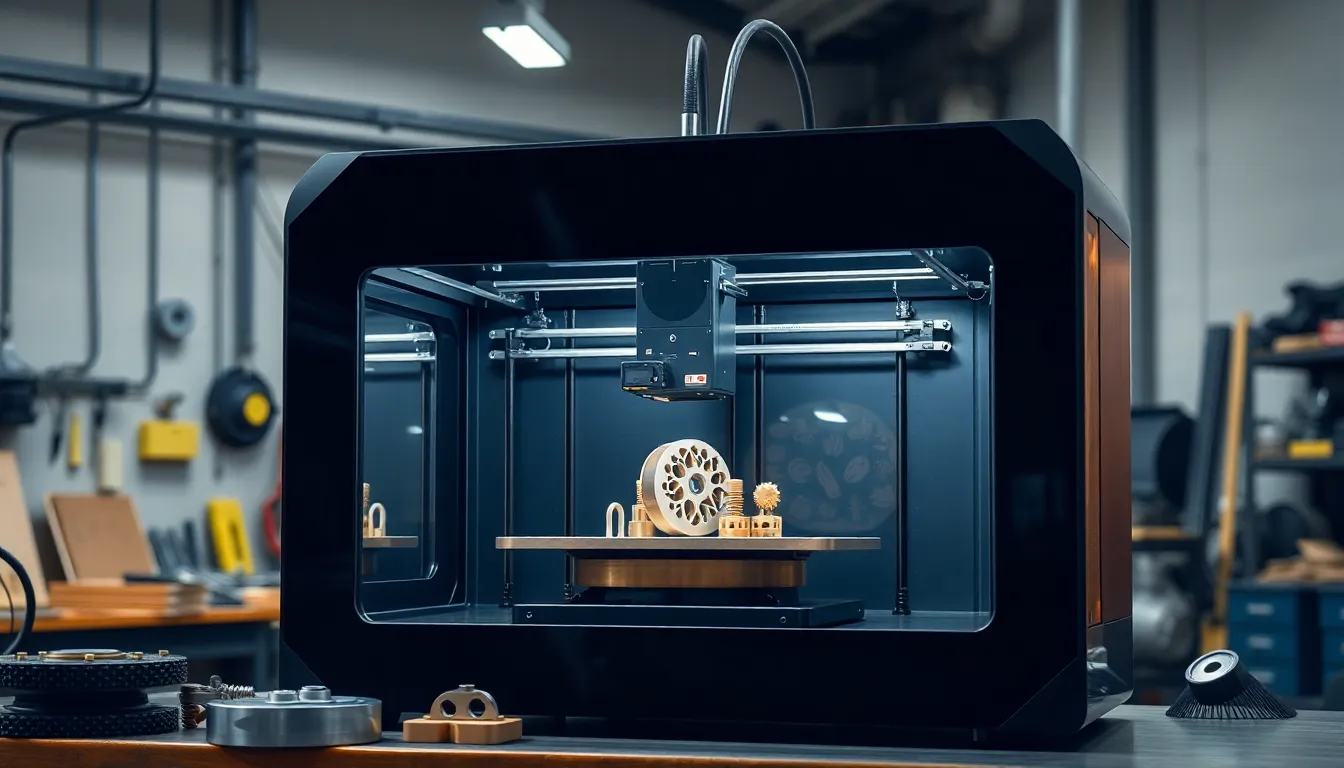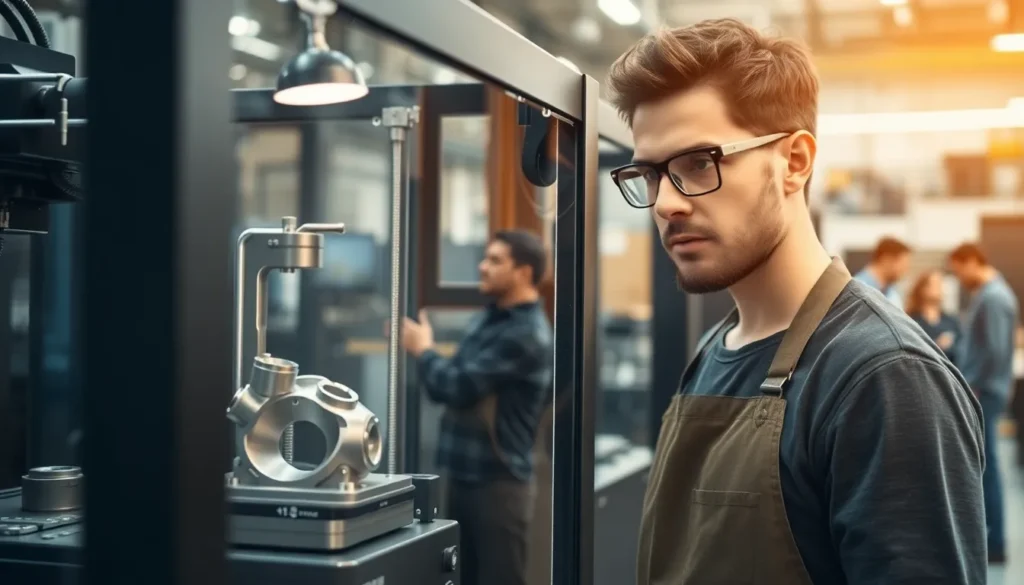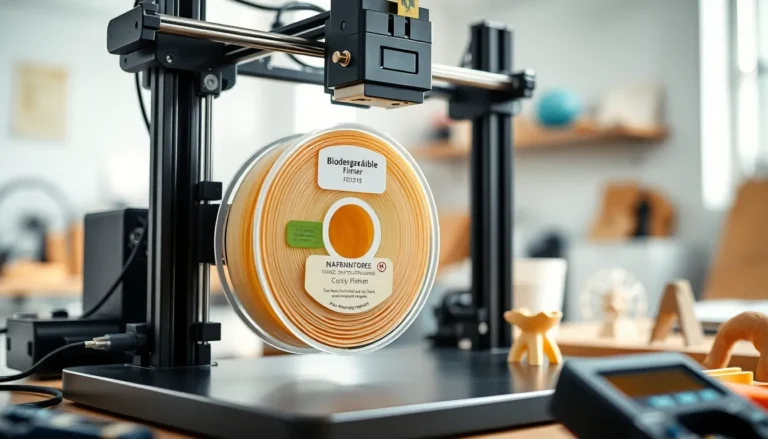Metal 3D printing is revolutionizing the manufacturing landscape, offering unprecedented design flexibility and efficiency. As industries seek innovative solutions to meet growing demands, this cutting-edge technology stands out for its ability to produce complex geometries that traditional methods struggle to achieve. By using advanced materials and techniques, metal 3D printing enables the creation of lightweight yet durable components, making it a game-changer in sectors like aerospace, automotive, and healthcare.
With its rapid prototyping capabilities and reduced material waste, metal 3D printing isn’t just a trend; it’s a pivotal shift toward smarter production processes. As more companies embrace this technology, understanding its advantages and applications becomes essential for staying competitive. This article delves into the intricacies of metal 3D printing, exploring its benefits, challenges, and future potential in various industries.
Table of Contents
ToggleOverview of Metal 3D Printing
Metal 3D printing, also known as additive manufacturing, encompasses processes that produce three-dimensional metal parts layer by layer. This technology leverages materials like stainless steel, titanium, aluminum, and cobalt-chrome alloys. By utilizing techniques such as selective laser melting (SLM), electron beam melting (EBM), and binder jetting, it delivers high precision and structural integrity.
Common Processes
- Selective Laser Melting (SLM): Uses a laser to melt and fuse metallic powders, creating strong components.
- Electron Beam Melting (EBM): Employs an electron beam in a vacuum environment for precise melting of powder particles.
- Binder Jetting: Utilizes a binding agent to adhere powder grains together, allowing for less thermal stress.
Applications
Metal 3D printing finds applications across several industries, including:
- Aerospace: Producing lightweight components that enhance fuel efficiency.
- Automotive: Creating custom parts for performance optimization.
- Healthcare: Manufacturing patient-specific implants and devices.
Advantages
Metal 3D printing offers several benefits:
- Design Flexibility: Enables the creation of complex geometries that can’t be achieved with traditional methods.
- Material Efficiency: Reduces waste by utilizing only the necessary amount of material.
- Rapid Prototyping: Speeds up the development cycle with faster test iterations.
Challenges
Despite its advantages, metal 3D printing presents challenges:
- Production Speed: Slower than traditional manufacturing techniques for large-scale production.
- Material Costs: Higher costs for metal powders compared to conventional materials.
- Technical Expertise: Requires specialized knowledge for machine operation and maintenance.
The ongoing advancements in metal 3D printing technology indicate a significant shift in manufacturing capabilities, enhancing precision and efficiency for various industries.
Advantages of Metal 3D Printing

Metal 3D printing offers numerous advantages that enhance its appeal to various industries. Key benefits include design flexibility and reduced waste, among others.
Design Flexibility
Design flexibility characterizes metal 3D printing. It allows for the creation of complex geometries that traditional manufacturing methods can’t achieve. This flexibility supports lightweight structures, intricate internal channels, and custom geometries tailored to specific applications. Engineers can optimize designs for performance and functionality without the constraints of conventional tooling. Industries, especially aerospace and automotive, leverage this flexibility to innovate and improve product performance.
Reduced Waste
Reduced waste marks another significant advantage of metal 3D printing. Traditional subtractive manufacturing methods often result in material loss due to cutting and machining processes. In contrast, metal 3D printing employs additive techniques, where material is added layer by layer, minimizing excess waste. This efficiency not only lowers production costs but also promotes sustainable practices. Manufacturers can redirect saved materials toward other projects or recycle them, enhancing overall resource efficiency.
Applications of Metal 3D Printing
Metal 3D printing plays a crucial role across various industries, driving innovation and efficiency. Its applications extend to aerospace, medical, and automotive sectors, each benefiting uniquely from this advanced manufacturing technology.
Aerospace Industry
Metal 3D printing revolutionizes the aerospace industry through lightweight component production and enhanced performance. It enables manufacturers to create intricate geometries, which lead to weight reduction and improved fuel efficiency. Notable applications include engine components, structural parts, and brackets that withstand high-stress environments. For instance, GE Aviation uses additive manufacturing for producing fuel nozzles, reducing weight by 25% compared to traditional methods. The ability to produce on-demand parts also minimizes inventory costs and streamlines supply chains.
Medical Sector
In the medical sector, metal 3D printing significantly enhances patient care by creating custom implants and surgical instruments. This technology allows for the production of patient-specific implants, such as titanium hip and knee replacements, tailored to individual anatomical requirements. Hospitals leverage metal 3D printing for producing complex surgical tools that improve precision during operations. Notably, the creation of bio-models aids surgical planning, resulting in better patient outcomes. The integration of metal 3D printing fosters innovation in personalized medicine and addresses unique healthcare challenges.
Automotive Manufacturing
The automotive manufacturing sector benefits from metal 3D printing through the rapid prototyping of parts and lightweight structures. Automakers utilize this technology to create complex components for performance optimization, such as exhaust systems and lightweight brackets. The ability to iterate designs quickly expedites the development process, allowing manufacturers to respond faster to market demands. Additionally, metal 3D printing enables the production of low-volume specialty parts, reducing wastage and overall production costs. Companies like BMW and Ford have embraced additive manufacturing to push the boundaries of design and engineering in their vehicles.
Challenges in Metal 3D Printing
Metal 3D printing presents several challenges that can impact its widespread adoption and efficiency. Understanding these challenges is essential for maximizing the technology’s potential in manufacturing.
Material Limitations
Metal 3D printing offers a range of materials, yet it faces limitations regarding types and properties. Specific alloys, such as titanium and stainless steel, exhibit excellent performance but may not encompass all mechanical properties required for certain applications. Each material undergoes distinct challenges related to availability, cost, and processability. For example, high-performance materials often carry significant costs. Additionally, the mechanical properties of printed parts may differ from conventionally manufactured counterparts, affecting their suitability for critical applications.
Post-Processing Requirements
Post-processing remains a substantial challenge in metal 3D printing. Parts often require additional finishing processes, including heat treatment, surface finishing, or machining, to achieve required tolerances and surface qualities. These steps can increase production time and overall costs, complicating the advantages of additive manufacturing. Specifically, achieving the desired mechanical properties and surface finish can necessitate multiple post-processing steps, which may negate some of the time savings initially gained through 3D printing.
Future Trends in Metal 3D Printing
Metal 3D printing continues to evolve, driven by technological innovations and a growing emphasis on sustainability. These trends promise to reshape the landscape of manufacturing across various sectors.
Innovations in Technology
Innovations in metal 3D printing technology focus on improving precision, speed, and material capabilities. Developments in machine learning and artificial intelligence enhance process optimization, enabling real-time adjustments during printing. New materials, especially high-performance alloys, expand application possibilities, delivering better mechanical properties. Furthermore, advancements in hybrid manufacturing, which integrates traditional machining with additive processes, increase production efficiency and surface finish quality. Enhanced print resolutions and faster build rates through innovations like multi-laser systems significantly reduce lead times, making on-demand production feasible. Companies actively investing in these advancements are likely to maintain a competitive edge.
Sustainability Efforts
Sustainability efforts in metal 3D printing emphasize reducing waste and resource consumption. The technology’s additive nature minimizes material waste compared to traditional subtractive manufacturing methods. Innovations in recycling metal powders enable manufacturers to reuse materials, lowering costs and enhancing sustainability. Additionally, using lightweight components contributes to energy-efficient designs, particularly in aerospace and automotive applications, reducing fuel consumption. Companies increasingly adopt circular economy principles, promoting reuse and recycling in their production processes. Increased focus on sourcing sustainable materials further aligns metal 3D printing with environmental goals, enhancing its appeal in the manufacturing sector.
Metal 3D printing stands as a pivotal force in modern manufacturing. Its ability to produce complex geometries and customized components opens new avenues for innovation across various sectors. As industries embrace this technology, they not only enhance production efficiency but also align with sustainability goals.
The ongoing advancements in metal 3D printing processes and materials promise to overcome current challenges. With a focus on improving speed and precision, the future looks bright for this transformative technology. Companies that invest in metal 3D printing will likely gain a competitive edge, driving progress and redefining standards in manufacturing.




